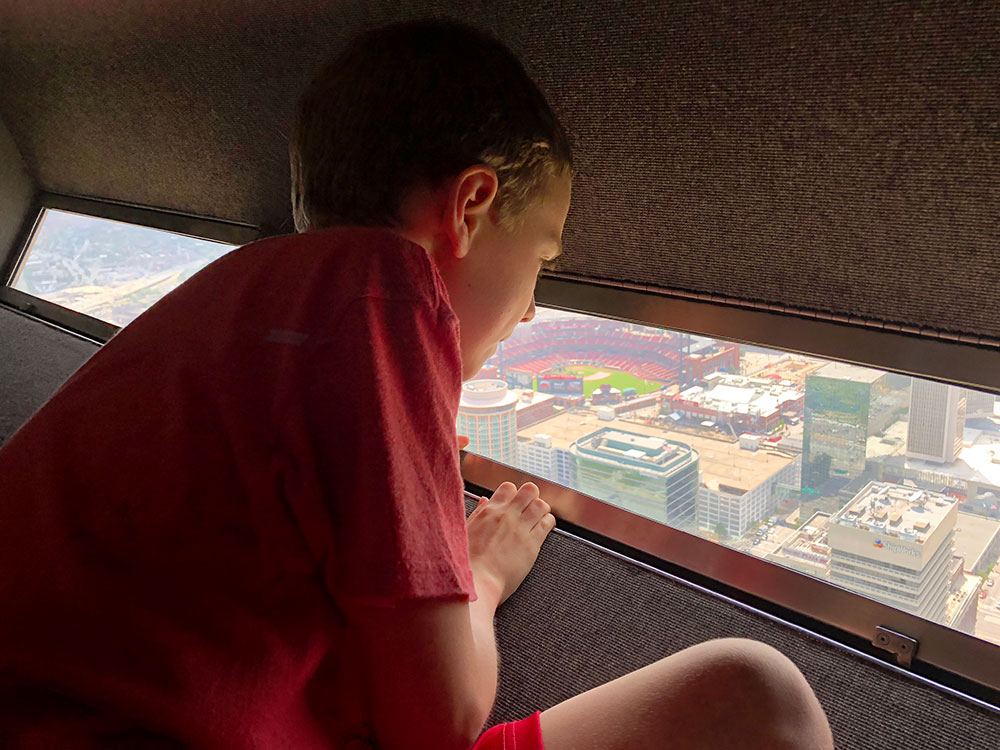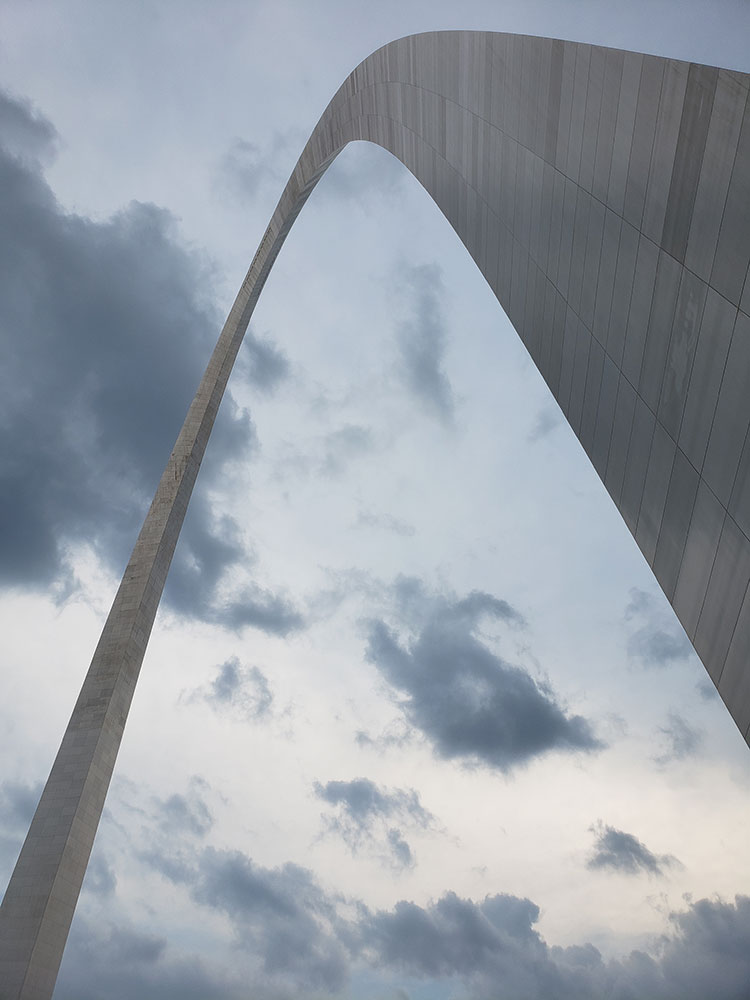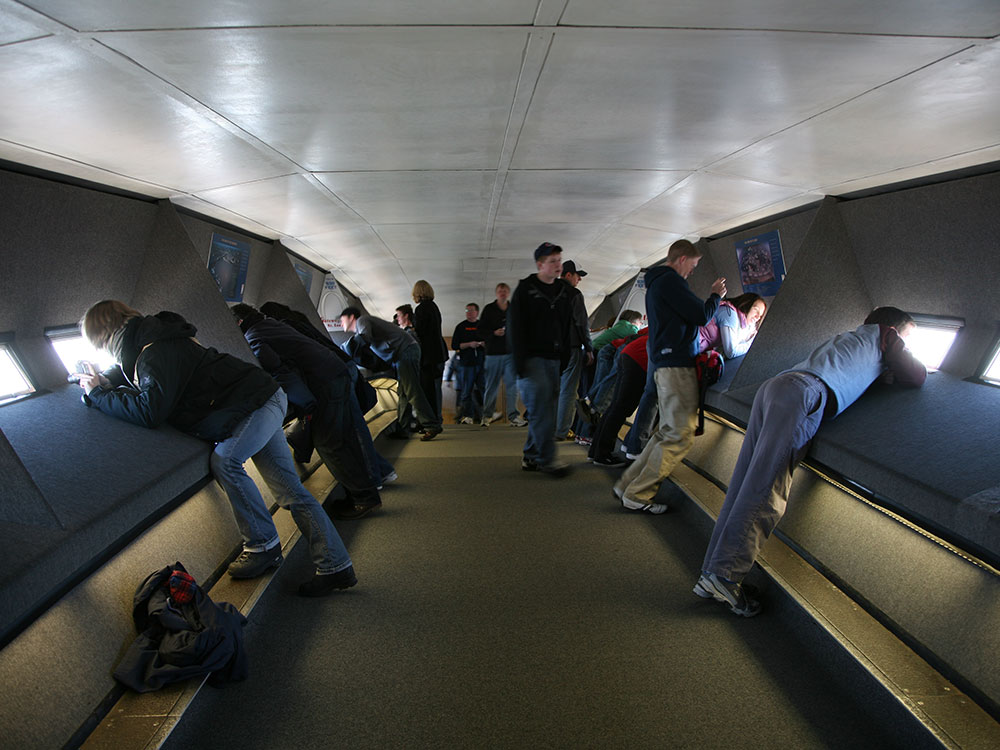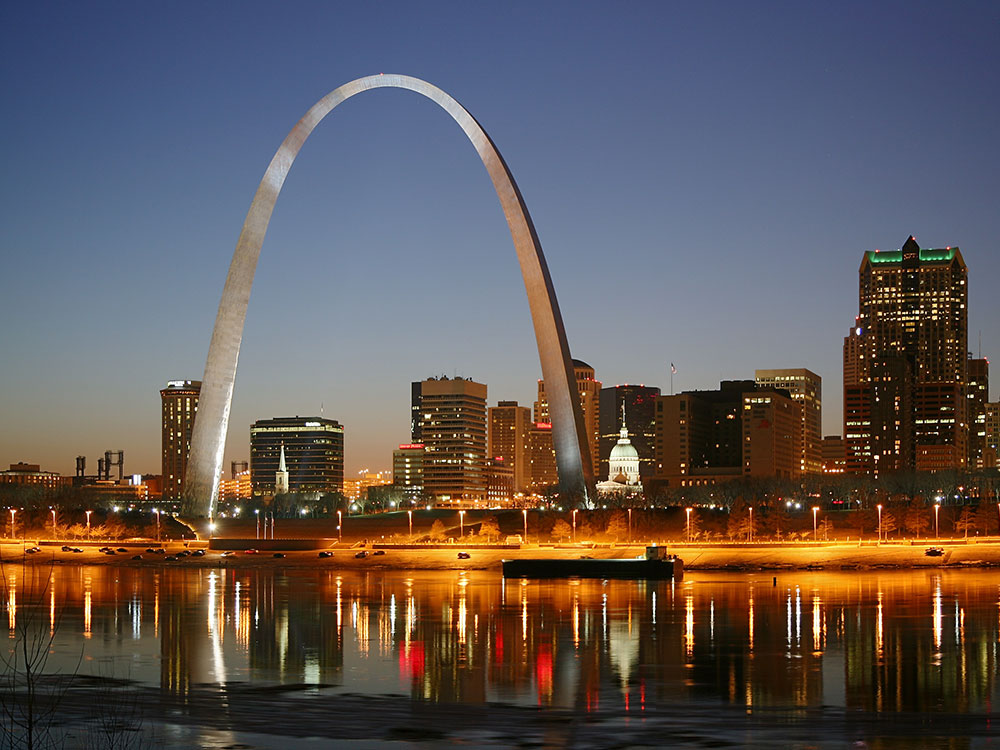630-foot (192 m) monument in St. Louis, Missouri, clad in stainless steel, is the world's tallest arch, the tallest man-made monument in the Western Hemisphere, and Missouri's tallest accessible building
General Information
Head south toward S Tucker Blvd. Take Market St and N 4th St to Laclede's Landing Blvd. Drive to N Leonor K Sullivan Blvd.
The Gateway Arch is a 630-foot (192 m) monument in St. Louis, Missouri. Clad in stainless steel and built in the form of a weighted catenary arch, it is the world's tallest arch, the tallest man-made monument in the Western Hemisphere, and Missouri's tallest accessible building. Built as a monument to the westward expansion of the United States, and officially dedicated to "the American people," the Arch, commonly referred to as "The Gateway to the West" is the centerpiece of Gateway Arch National Park and has become an internationally recognized symbol of St. Louis, as well as a popular tourist destination.

The Arch was designed by Finnish-American architect Eero Saarinen in 1947; construction began on February 12, 1963 and was completed on October 28, 1965. The monument opened to the public on June 10, 1967. It is located at the site of St. Louis's founding on the west bank of the Mississippi River.
Both the width and height of the arch are 630 feet (192 m). The arch is the tallest memorial in the United States and the tallest stainless steel monument in the world.
The cross-sections of the arch's legs are equilateral triangles, narrowing from 54 feet (16 m) per side at the bases to 17 feet (5.2 m) per side at the top. Each wall consists of a stainless steel skin covering a sandwich of two carbon-steel walls with reinforced concrete in the middle from ground level to 300 feet (91 m), with carbon steel to the peak. The arch is hollow to accommodate a unique tram system that takes visitors to an observation deck at the top.
The first proposal to illuminate the arch at night was announced on May 18, 1966, but the plan never came to fruition. In July 1998, funding for an arch lighting system was approved by St. Louis's Gateway Foundation, which agreed to take responsibility for the cost of the equipment, its installation, and its upkeep. Since November 2001, the arch has been bathed in white light between 10 p.m. and 1 a.m. via a system of floodlights. Designed by Randy Burkett, it comprises 44 lighting fixtures situated in four pits just below ground level.
The underground visitor center for the arch was designed as part of the National Park Service's Mission 66 program. The 70,000-square-foot (6,500 m2) center is located directly below the arch, between its legs.
The center houses offices, mechanical rooms, and waiting areas for the arch trams, as well as its main attractions: the Museum of Westward Expansion and two theaters displaying films about the arch. The museum houses several hundred exhibits about the United States' westward expansion in the 19th century and opened on August 10, 1977.
Near the top of the Arch, passengers exit the tram compartment and climb a slight grade to enter the observation area. This arched deck, which is over 65 feet (20 m) long and 7 feet (2.1 m) wide, can hold up to about 160 people, equivalent to the number of people from four trams. Sixteen windows per side, each measuring 7 by 27 inches (180 mm x 690 mm), offer views up to 30 miles (48 km) to the east across the Mississippi River and southern Illinois with its prominent Mississippian culture mounds at Cahokia Mounds and to the west over the city of St. Louis and St. Louis County beyond.
There are three modes of transportation up the arch: two sets of 1,076-step emergency stairs (one per leg), a 12-passenger elevator to the 372-foot (113 m) height, and a tram in each leg.
Each tram is a chain of eight cylindrical, five-seat compartments with a small window on the doors. As each tram has a capacity of 40 passengers and there are two trams, 80 passengers can be transported at one time, with trams departing from the ground every 10 minutes. The cars swing like Ferris-wheel cars as they ascend and descend the arch. This fashion of movement gave rise to the idea of the tram as "half-Ferris wheel and half-elevator." The trip to the top takes four minutes, and the trip down takes three minutes.
This article uses material from the Wikipedia article "Gateway Arch", which is released under the Creative Commons Attribution-Share-Alike License 3.0
Gateway Arch Pics




